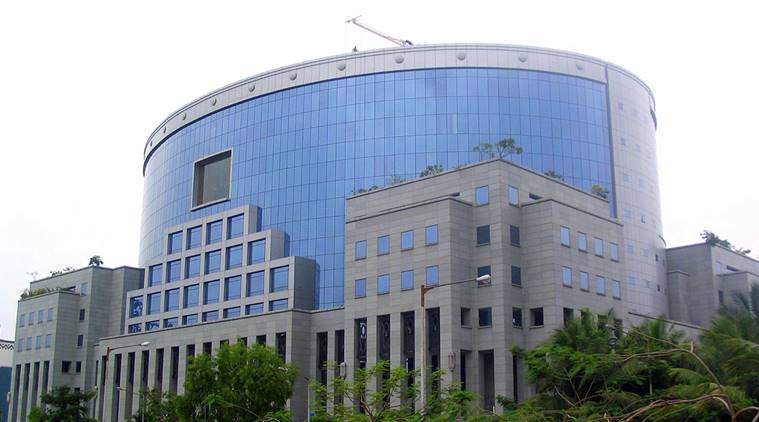In bad company
IL&FS crisis underlines it: There is no alternative to corporate governance reforms.

It is not just IL&FS where professionals who ran the group for over two decades are under the scanner. Metres away from the firm’s headquarters, another professional, the CEO of ICICI Bank, too, is facing charges of conflict of interest and quid pro quo.
IN Gabriel Garcia Marquez’s Chronicle of a Death Foretold, the narrative is about how an entire town is well aware that two brothers are out to kill Santiago Nasar to avenge their family honour. All of them know about the spot where he is to be killed and the timing. Yet Nasar did not recognise the omen. The unravelling of infrastructure conglomerate IL&FS over the last few days, with the potential risk of contagion in the financial sector, is a bit like that.
Like Nasar, the omen was not recognised for long by its institutional shareholders, the board and by the government and regulators, though it was evident to many in the financial sector who could not or did not call it out. With a new board appointed by the government in place to restore, as it says, the credibility and solvency of the group in the eyes of the financial markets and investors, a restructuring is inevitable. That will then possibly mark the end of yet another infrastructure financing firm promoted by the government or state-backed entities over the last three decades, after the likes of the old development financial institutions, such as IDBI, ICICI, IFCI and later IDFC, exposing the underbelly of India’s model of infrastructure development.
As pressures mount to stop yet another bail-out of a hybrid institution — one which positioned itself as a private professionally run infrastructure developer and financier when it suited it and as a sovereign backed group at other times — there is little reflection on the cost of erosion of the huge amount of capital originally deployed either by the government in some of these institutions or by banks or investment institutions, which the government controls and the value destruction presided over by successive governments.
Consider this: As early as 1997, the government and the RBI contributed Rs 1,000 crore as capital to a new infrastructure institution which was promoted, IDFC, to provide innovative solutions to financing infrastructure projects. It is curious that, on the way, the RBI exited much before the institution finally morphed into a bank. And as each of these term lending institutions fell by the wayside, the response was to promote another one — the last one being IIFCL.
It is not just the design flaws, evident in the fall of IL&FS or other institutions before that, which should be reason for worry. Rather, this crisis is about the models to achieve economic goals — state-run businesses, family or promoter driven entities, and firms with diversified shareholding that are professionally managed. As the government stakeholders and regulators go about trying to work out a resolution plan and contain the damage, they should also take a closer look at what appears to be the weakness in the Indian model of what were seen as professionally managed or run firms without a dominant promoter or diversified shareholding. Over the past year, there has been a serious dent to this model purely because of governance and leadership flaws, subservient boards and integrity issues. It is not just IL&FS where professionals who ran the group for over two decades are under the scanner. Metres away from the firm’s headquarters, another professional, the CEO of ICICI Bank, too, is facing charges of conflict of interest and quid pro quo. And over the last year, at two other institutions which were helmed by professionals — Axis Bank and the National Stock Exchange — CEOs had to move out because the regulators forced them to.
In the post reforms period, with delicensing and deregulation and with the state exiting many businesses, successive governments and regulators encouraged the diversified shareholding model and professionally run, board-managed firms. But over a period of time, as the original promoters in some of these listed firms — mostly government-owned banks or investment institutions — started diluting their holdings, with no dominant shareholder, the CEOs of some of these companies acquired a larger-than-life role helped by so-called independent boards meekly acquiescing to the decisions. Rather than the democratisation of wealth which is what was celebrated in the glory days of India’s top software services and other firms including some private banks, this was over the last few years limited to a small club of senior management professionals with little or no relation to the performance of their companies, thus widening the divide. The refusal to list in some cases on lofty grounds only led to greater opacity with little oversight by either the board and the shareholders even as risks started building on the balance sheets. In the case of banks, especially, managements and the boards of companies have a fiduciary responsibility to report accurate results. In the West, divergence on numbers is seen to be as good as fudging with severe consequences. Thankfully, the Indian regulator has started acting against some of these CEOs.
Three committees have over the last two decades spelt out what needs to be done on the corporate governance front. The last one — the Kotak committee which submitted its report last year — had said that good corporate governance primarily helps overcome potential agency problems, which can occur if managers who are agents of all shareholders pursue their personal interests to the possible detriment of investors’ interests. An earlier committee headed by N R Narayana Murthy in 2003 defined this concept as being about commitment to values, about ethical business conduct and about making a distinction between personal and corporate funds in the management of a company. And it had an important message — the cost of governance reforms may be high but the failure has a cost beyond regulatory problems. But more importantly, it rightly said that corporate governance is beyond the realm of law. “It stems from the culture and mindset of management and cannot be regulated by legislation alone”.
It is that openness, integrity and accountability which is on test now as also the models of business and leadership and the challenge arising from the fact that there is no pure play infrastructure financing institution now. Yes, fat cats should be punished but getting the mindset and governance culture right — be it in state run or professionally run companies — will matter most.
shaji.vikraman@expressindia.com
For all the latest Opinion News, download Indian Express App
More From Shaji Vikraman
- India’s first woman IAS officer Anna Malhotra dies at 92India’s first woman IAS officer after Independence spent a good part of her day there well after she completed her last official assignment in 1989…
- Explained: Why Bank of Baroda, Vijaya Bank and Dena Bank are being mergedGovt announces merger of Bank of Baroda, Vijaya Bank and Dena Bank, amid long-felt need for consolidation rather than fragmentation of state-owned banks. How does…
- India’s elite should take responsibility to reduce rising inequality: Narayana MurthyWith 400 million semi-literates and 400 million illiterates in a country like India, job creation will have to come from manufacturing and low tech services,…







































No hay comentarios:
Publicar un comentario